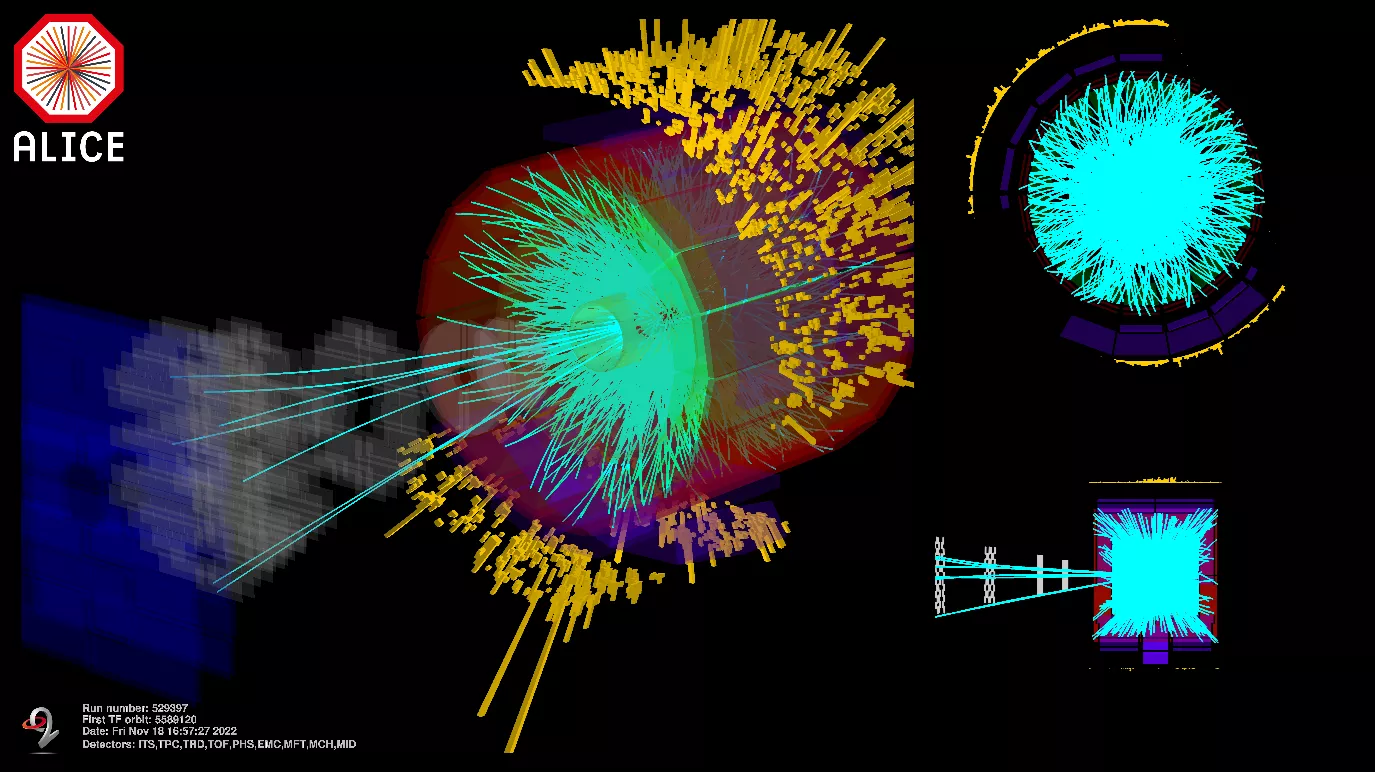Researchers working on the ALICE project (A Large Ion Collider Experiment) at CERN on November 18, 2022 announced that the first lead-on-lead collision measured at record energy had taken place in Run 3 around 5 pm. Members of the Hungarian ALICE Group and other researchers of the ELKH Wigner Research Centre for Physics (Wigner RCP) have also contributed to this achievement. Their contribution extended to participating in the development of the new Gas-Electron Multiplayer (GEM) based Time Projection Chamber (TPC) of ALICE, as well as the Data Acquisition System (DAQ) of the experiment. The results achieved by the ALICE detector related to high-energy heavy ion physics as well as the development of the detector in the last decades were presented in a publication by CERN.
Construction of the time projection chamber of ALICE began in 2015 and was completed in August 2020 after several years of development. With its size of 88 cubic meters this is currently the world's largest GEM-based TPC detector. The detector developed based on new principles replaced the previous version designed around 1995 in ALICE's huge central electromagnet. An important innovation in the GEM technology is how it enables continuous data reading from the detector, so that almost all of the tens of thousands of particle trajectories generated during the 50,000 lead-on-lead collisions taking place each second can be recorded thanks to the newly developed readout system operating at a speed of up to 4 terabytes per second (TB/s).
Wigner RCP has undertaken a significant ongoing task in order to support and help develop this data collection, data compression and data transmission system known as the DAQ system. An important role is also assigned to the Wigner Scientific Computing Laboratory (WSCLAB) located in the Wigner Data Center, which includes the WLCG Tier 2 and Wigner ALICE Analysis Facility built to process special large data packages. These high-capacity computing systems help analyze more than 200 petabytes (PB) of new data each year.
The most recent achievement has required many years of coordinated work, which the participants in the ALICE experimental collaboration have documented in a publication released in November 2022. The publication entitled The ALICE Experiment: A journey through QCD to which the members of the Hungarian ALICE Group have also contributed, presents the results achieved by the ALICE detector related to high-energy heavy ion physics as well as the development of the detector in the last decades, along with the measurements that the newly developed ALICE detector inaugurated in the summer of 2022 makes possible and the expected new results in physics.
A previous article about the development of the TPC can be read here.
More information about the DDL (Detector Data Link) and DAQ system can be found on the Wigner RCP website.

Lead-on-lead collision in the ALICE detector, November 18, 2022 at 16:57:27